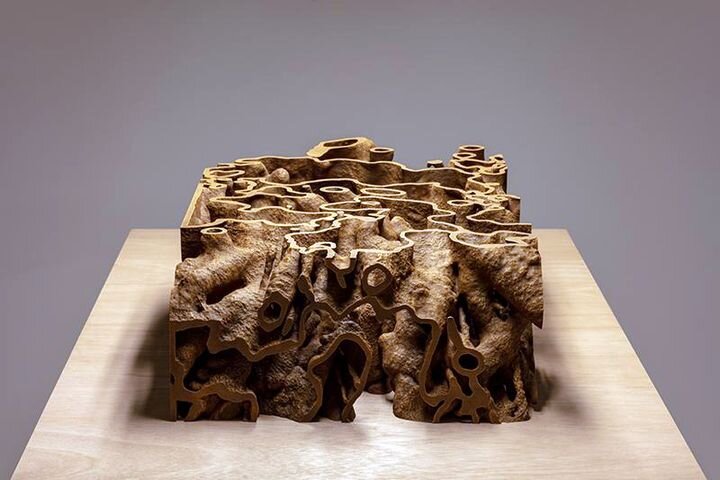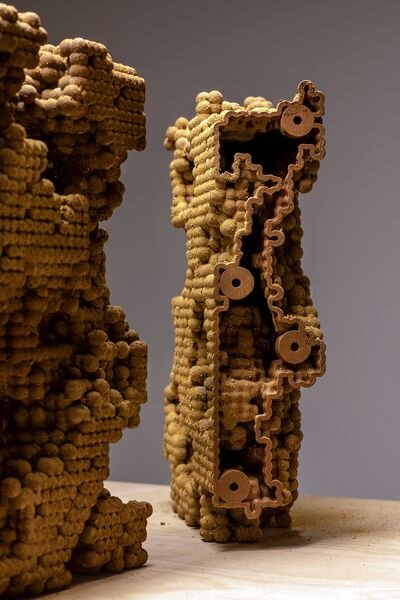
This week’s selection is the Termite Economies: Phase 2 (Metabolic Shift) by Australian artist Nicholas Mangan.
The artwork represents digital rendered termite hives and were produced using voxeljet’s 3D printing technology. The voxeljet team in the US just finished a new set of forms for Termite Economies Phase 3 to be shown in a Gallery in Mexico in March 2020.
Termite Economies: Phase 2 (Metaboli Shift) includes 3 major sculptural works that combine a number of engineering structures, both human and termite, into a hybrid architecture. The sculptures are accompanied by a small monitor screening a film vignette that is a montage of archival footage from a 1960’c documentary called “The Colony”, a field research images of a termite mound in Namibia, a point-cloud scan of an underground mine tunnel system, and an artist’s footage of termite mounds in Western Australia.

Brown in color and roughly textured with dirt, the sculptures appear organic, but they are in fact impossible objects, rendered on screen and 3D printed. For the installation, the gallery is lightly lit and each sculpture has a “grow lamp” hovering above it, giving the viewer the sense that they are in a field after an excavation.
While the works are 3D printed by voxeljet in a plaster form, they were then finished with applications of dirt, synthetic polymer paint, plywood, painted mild steel and fluorescent bay lights.

It’s not explained by Mangan how the 3D model of the termite tunnels was created, but it’s possible they were filled with a solidifying material, extracted and then 3D scanned.
Nature provides amazing structure, and Mangan has enabled all of us a unique way to view this example through 3D printing.
Via Nicholas Mangan

